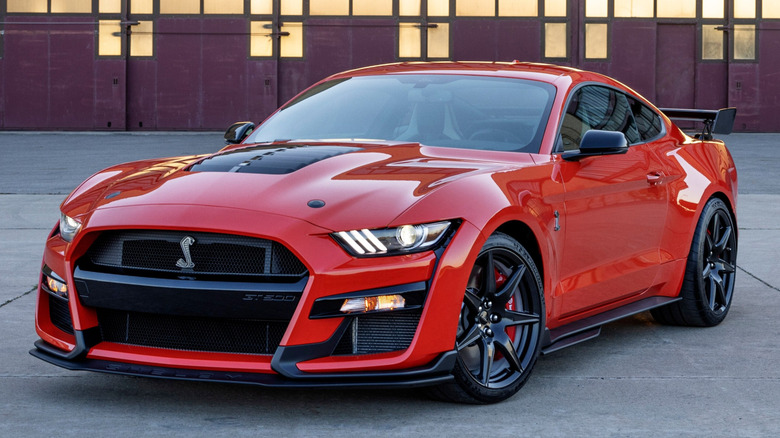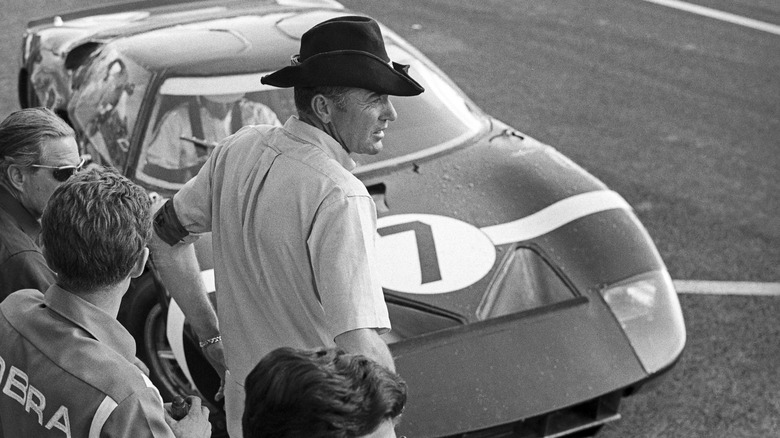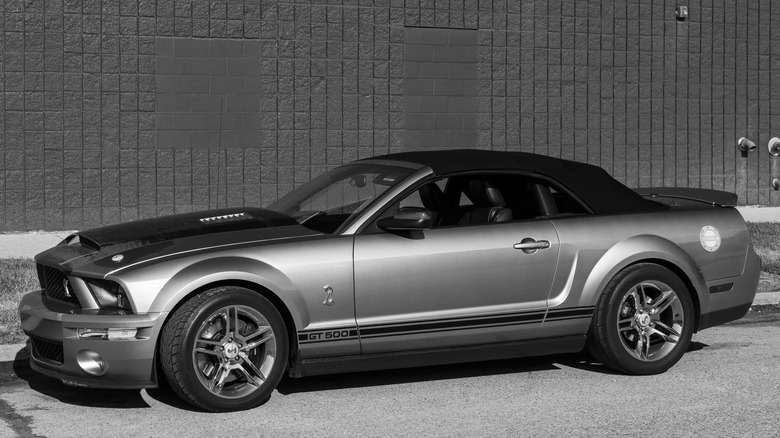
Not all Ford Mustang models are made equal. On one hand, there's the 4-cylinder EcoBoost 2.3-liter Mustang built for fuel efficiency and affordability. On the other hand, there's the Shelby Super Snake: a sports car engineered for those who think 800 horsepower just isn't enough for a Mustang.
Since its release in 1964, the Ford Mustang has remained an incredibly popular car. Just a year later, Carroll Shelby introduced the high-performance Shelby GT350, which marked the beginning of the fruitful
Ford and Shelby partnership that we all know and love today. Its racier sibling — the SFM5R002 GT350R — became the most expensive Mustang ever sold when it fetched $3.85 million at a Mecum auction, and it's also recognized as the very first Shelby Mustang to win a race.
Compared to a factory-spec 1964 Mustang, the GT350 got a more powerful 4.8-liter 306 horsepower V8, a race-tuned suspension, and a stripped interior for weight savings. This very formula defines Shelby models to this day: a relentless pursuit of power, precision, and purpose. However, what truly makes a Shelby Mustang special is how seamlessly it all comes together.
Read more: Every Ford Mustang Generation Ranked Worst To Best
Why The Shelby Mustang Matters

Just like Porsche offering the expensive GT3 RS for sports car purists who want more than just a 911, Shelby builds Mustangs for pony car lovers who want more than just a Mustang. Even though the 271 horsepower of the high-output K-code 289 Mustang was pretty special for the 1960s, for Carroll Shelby, it simply wasn't enough.
Over the years, the main Shelby formula has largely stayed the same. More power from a beefier V8, upgraded suspension, racier tires, bigger brakes, and less weight. However, the biggest difference between a Shelby and a regular Mustang is arguably the most obvious: the looks. Shelby Mustangs get distinct styling cues such as the iconic racing stripes, a coiled cobra on the grille, a wider stance, and aggressive body kits, all of which give it road presence that a "regular" Mustang does not have.
Last, but certainly not least, it's also about racing heritage and legacy. Like all legends, Carroll Shelby had a dream: To make American cars outrun the best Europe has to offer. That very dream became reality when the Shelby-revised Ford GT40 dethroned Ferrari, won Le Mans four consecutive times from 1966 to 1969, and marked one of the greatest triumphs in motorsport history.
Evolution Of The Shelby Mustang

Making a performance car stand out today is more difficult than ever. There are countless brands out there doing the best to make sports cars feel special and unique. In such a competitive world, Shelby does not just survive. It thrives, and it does so because it follows the same formula that made it great in the first place.
After the 1965 GT350 that made Shelby a household name, the last solid rear axle S197 2007 Shelby GT500 also deserves a mention. This modern revival of the custom Mustang reinvigorated the Shelby nameplate after nearly three decades of absence from the Ford lineup. The latest 2025 Shelby Super Snake continues the legacy as "the most engineered and driver-focused production model to date," according to Shelby American.
It's impossible to single out one main difference between a Shelby Mustang and a regular Mustang, because it's the combination of power, handling, design, and heritage that defines the Shelby package and also reminds us why we love cars in the first place. Carroll Shelby understood that, and that's what makes the Shelby Mustang a lasting symbol of American car culture and of the legacy Shelby left behind.
Want the latest in tech and auto trends? Subscribe to our free newsletter for the latest headlines, expert guides, and how-to tips, one email at a time.
Read the original article on SlashGear.











